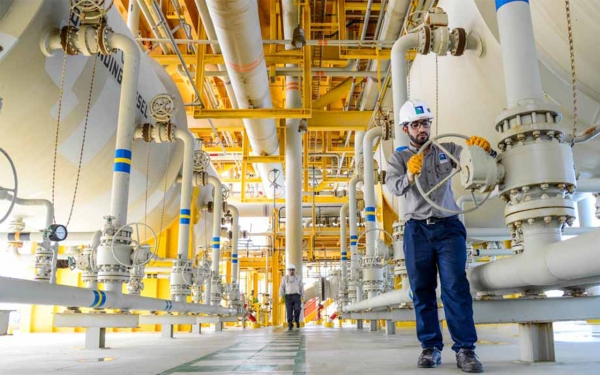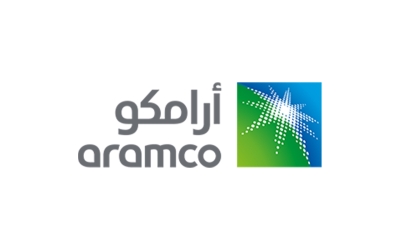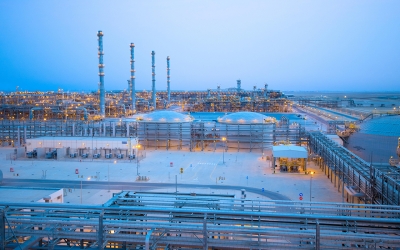
Ras Tanajib serves as a center of Saudi Aramco's offshore operations expansion, housing the Safaniya submerged area production administration.
Production at Ras Tanajib
Tanajib area contributes a significant crude oil production rate of about four million bpd and 5.9 billion scf of gas daily. Operations in this area are managed by a national workforce of young people, comprising 62 percent of the crude oil workforce in the northern business area of the company.
The gas-oil separation plant and other facilities in Tanajib were completed in 1985, making it the new center for the company's offshore operations, including new gas-oil separation plants in the Zuluf and al-Marjan fields.
The gas plant in Ras Tanajib, part of al-Marjan Oil Field development program, has facilities to process gas with a production capacity of up to 2.6 billion scf per day, with production targeted to begin in 2025. The project involves processing gas from al-Marjan, Safaniya, and Zuluf fields, with the engineering designs and material procurement phase already underway.
Facilities at Ras Tanajib
Ras Tanajib has emerged as a significant oil facility with a notable increase in crude oil production. It serves as the center of activities related to the submerged area operations in the northern working area, serving several oil and gas fields, including the Safaniya Oil Field, the largest offshore oil field in the world, producing over 1.3 million bpd of crude oil with oil reserves of approximately 34.03 billion bbl of oil equivalent, including 33.66 billion bbl of liquid reserves.
Other important fields in Ras Tanajib area include the Manifa Oil Field, the fifth-largest oil field in the world and a challenging field developed by Saudi Aramco. Production began in April 2013 with a capacity of five hundred thousand bbl per day of Arab Heavy oil.
The area also includes fields like Zuluf, al-Marjan, Hasbah, Kiran, and Khafji, contributing to the daily flow of oil and gas.
Development of operations at Ras Tanajib
As part of developing operational businesses and innovating advanced technical solutions in Ras Tanajib area, a new floating storage and supply vessel was launched in August 2016, which Saudi Aramco had started operating primarily to support offshore drilling activities.
This vessel serves as a remote marine supply base near drilling rigs, providing rapid support for material delivery, mixing mud and drilling fluids, and carrying equipment, cargo, chemicals, water, and fuel. It has open and closed storage areas.
It is a pioneering model globally and represents a quantum leap in managing marine logistics. Additionally, it supports seven offshore drilling rigs through the combined efforts of marine logistic services, gas operations, and the drilling tool warehouse.
The offshore vessel has revolutionized the way offshore drilling rigs are supplied. It is equipped with all necessary supplies and equipment to ensure the smooth operation of the marine drilling rigs. It saves time and reduces the costly trips to and from the port. The floating vessel, operating seventy NM from the small docks of Ras Tanajib and serving as one, has reduced congestion at the marine dock and made boat dispatch to drilling rigs more efficient, saving significant costs for the company.
The construction works at the gas plant at Ras Tanajib continue, a part of al-Marjan Oil Field development program, which will increase processing capacity by 2.6 billion scf per day from al-Marjan, Safaniya, and Zuluf fields, with operations expected to start in 2025.
Gas flaring reduction at Ras Tanajib
In line with Saudi Aramco's environmental conservation efforts and the responsibilities borne by each department to achieve maximum environmental supervision in all aspects of operations, the Safaniya onshore production administration completed an initiative to reduce gas flaring in March 2016. To achieve operational excellence, a gas recovery system was designed and installed at Ras Tanajib plants to eliminate daily gas flaring, protecting the environment from harmful emissions such as sulfur and nitrogen oxides.
This system began operations on October 26, 2015, recovering 0.41 million sscf daily without affecting plant operations. This amount contributes to increasing the expected limit of flammable gas recovery to 150 million scf annually, reducing harmful sulfur oxide emissions to 450 t annually, and increasing profits by approximately USD1.5 million. This achievement is distinguished by the design and construction of the system using in-house resources and materials to reduce operating costs.
Related quizzes


